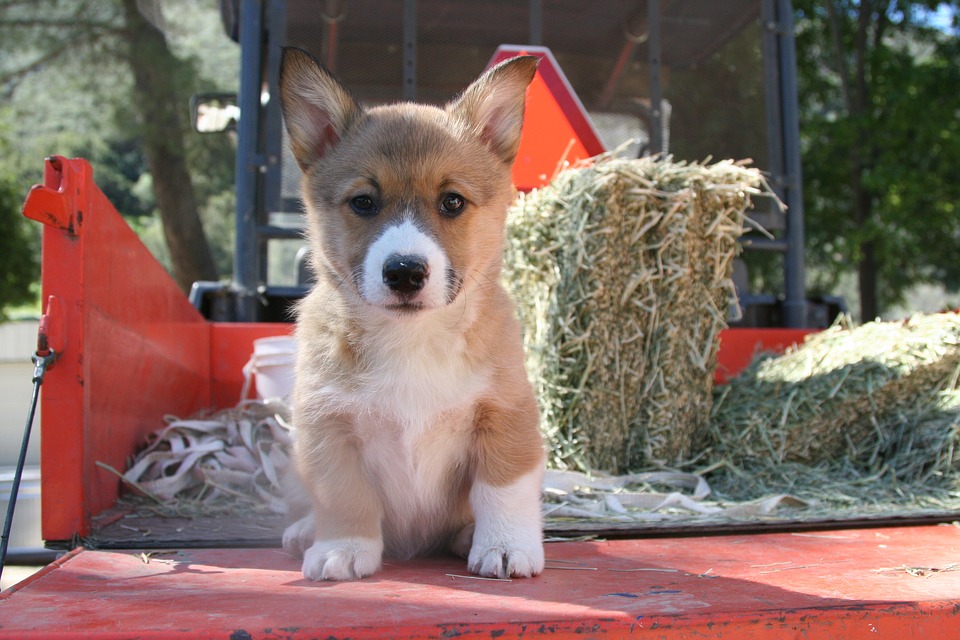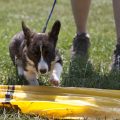Table of Contents
A standard corgi size has been around since 1107 AD in some way. They certainly didn’t look how they look today, but there are historical records describing a corgi size that sports a short-legged dog used for driving cattle in Pembrokeshire, Wales. Though the origins of the breed are not clear, it is suspected that the Pembroke type came about as a result of the Cardigan Welsh Corgi being allowed to interbreed with Flemish Spitz-type dogs. Despite Pembroke’s antiquity, the breed was not recognized by the AKC until 1934, and the older Cardigan was not recognized by the same organization until 1935. Prior to the AKC distinction of the breeds, the two were allowed to interbreed freely. If you are interested in seeing how the Pembroke and Cardigan Welsh Corgi breed has changed since the early 1900s, then this article is what you need to read. You’ll also learn about the corgi size and their characteristics.
Corgi Size: Pembroke Welsh vs. Cardigan Welsh
The two Corgis are similar in appearance but still distinct from one another. They both have low and deep-chested dogs, but they have their differences when it comes to their physique.
In the US, the most obvious difference is that the Cardigan is tailed, and the Pembroke is not. In other countries, the Pembroke often has a full tail. There are also huge differences in personality, both of which match the breed ancestry: Pembrokes are spitz and Cardigans are hounds.
Pembroke vs. Cardigan
The Pembroke breed is the friendlier and more social, while the Cardigan breed tends to be more aloof. Years of interbreeding prior to the AKC distinction of the breeds has brought them closer together in appearance and personality.
When it comes to corgi size, the Cardigan is more of a larger dog; taller, heavier in weight, and also heavier – boned. The Cardigan is also rounder, sporting rounded ears and “round” feet, and their toes are all the same length. They also have a wide array of coat colors that you can choose from. Check out the comparison below:
Pembroke Welsh Corgi
- Height: 10 to 12 inches
- Weight: (Males): 27 to 30 pounds; (Females): 25 to 28 pounds
- Colors: Red, Sable, Tricolor
- Ears: Pointed
- Feet: Oval
- Expression: Intelligent and interested and not sly
- Temperament: Bold and kindly
Cardigan Welsh Corgi
- Height: 10 1/2 to 12 1/2 inches
- Weight: (Males): 30 to 38 pounds; (Females): 25 to 34 pounds
- Colors: Red, Sable, Tricolor, Brindle, Merle, and Black
- Ears: Rounded
- Feet: Round
- Expression: Alert, gentle, watchful, and friendly
- Temperament: Adaptable, loyal, affectionate, and even – tempered
Corgi Size and Habitat
The herding heritage of the corgi does not only contribute to their mentality or attitude but also to their physical state. Lots of new owners see their Corgi and just think of it as a small canine that they control, and easy to train. They classify it as some kind of lap dog, but their corgi size is false in many ways, so don’t let their size fool you because these dogs have a larger – than – life personality.
Not a Small Dog
First of all, the corgi size is not a “small dog,” it’s still a medium – sized dog with short legs. There’s a difference in that. Secondly, these dogs were raised for centuries as herders, and if you’re not familiar with it, that’s a physically demanding job, but these short – legged Corgis were able to do the job. They have a demanding presence and an active energy required to keep the herd from going anywhere which is why they’ll do better in a large house with a backyard than in an apartment because they’ll have plenty of space that’ll provide as an outlet for their energy. Lastly, many people get deceived by their short legs, and they think that Corgis are slow, lumber movers, but nothing could be further from the truth. Any Corgi owner will tell you that they are dogs built like bullets with a speed to match!
Keep Boredom at Bay
If the Corgi is not properly trained and cared for, this very energetic and highly intelligent breed can go astray and lend itself to disaster so make sure that you’re someone who can handle their demanding attitude. If a dog is bored, no matter what kind of breed it may be, he/ she will find a way to keep their boredom at bay, and they’d do it through destroying home furniture or finding a way to run off your house.
It’s a must that Corgis get the appropriate amounts of exercise so that they won’t get bored and you’ll get to avoid their destructive behaviors. A tired Corgi is someone that won’t cause any problems, be it herding, barking, biting, or any types of undesired behavior. You also need to provide mental stimulation for your pet Corgi.
Lil’ Gremlins
Corgi sizes are smart little gremlins and they also tend to be easily bored if you let them do repetitive tasks. For some Corgis, going on a daily neighborhood walk (or even a weekly neighborhood walk) is really boring. They would rather just not walk at all, planting their feet and refusing to participate willingly. It’s very important to find a regular physical activity that engages your pet in order to avoid any development of undesired behavior.
Keep in mind that corgi size also don’t make good jogging or biking partners and it’s really because regular running can be too stressful for their joints. Unless you are running or biking in sand or soft dirt, jogging and biking should not be part of your Corgi’s regular exercise routine although you can still do this on occasion.
If your pet will be interacting with other dog breeds, you’ll find that Corgis want to play the “good cop, bad cop.” They usually bark at other dogs, chase them around and also bark at them, but also join in on the fun. They also have a tendency to chase and bite at other dogs when playing one – on – one. This is a completely normal Corgi behavior but the barking and biting may not be very welcome at the dog park so just make sure to supervise your pet.
They live for learning new things and having the chance to really work with their human companions. Letting such an enthusiastic worker go without work is nothing short of a tragedy. In fact, they often pick jobs for themselves, and you may not appreciate the jobs they decide to take on. It’s better to decide for them. We hope you learn a lot about corgi size and characteristics of the breed.






 Author and long-time animal lover. Sharing knowledge on pet care through experience and the written word.
Author and long-time animal lover. Sharing knowledge on pet care through experience and the written word.